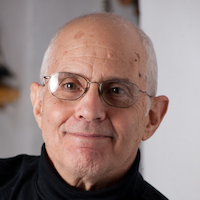View this post on Instagram
Cultural appropriation in yoga is not black and white. Appropriation is vile, appreciation is vital. Women were (including now) discouraged or outright barred from teaching Buddhism/practicing yoga (with exceptions, covered on Elephant) until it came to the West. Yoga has always evolved—incorporating everything from calisthenics to, these days, disco or candle/chocolate/pot nights, for better and, perhaps, for worse.
Sharing is vital. We don’t want everyone to just hole up in their silo–that’s what white supremacists do. But culture, and spirituality, must be passed down, and studied and practiced with respect, gratitude, and generosity/mentoring. ~ ed.
I’ve listened to many people argue that much of yoga in America is a blatant appropriation of India’s cultural heritage.
Others have argued that it is just another variation of yoga adapting to different times and places, as it always has.
My perspective, as someone who has chronicled the transmission of India’s spiritual treasures to the West, is that the issue is more complicated, more delicate, and more nuanced than you might guess from the highly charged debate.
It would take an entire book to sort out all the complexities. I hope the points I’m about to make can add some perspective and give everyone who cares about the topic some food for thought.
First, cultural appropriation is a real thing. Yes, the term can be applied too loosely and charges can be made unfairly. But it should not be dismissed as political correctness run amok. It’s real. It matters. It should be understood that some uses of the term “yoga,” and some of the programs and products marketed under the name of yoga can be offensive to people in India and to Americans of Indian descent. (Toilet seat covers adorned with the image of Ganesha?)
Yoga represents a precious cultural heritage, and that legacy contains deep, profound, and sacred meaning for many Hindus. It can be painful for them to see their tradition trivialized, commercialized, and misrepresented, especially when those who benefit financially from yoga fail to respect its source and present it as an exercise system without acknowledging its meditative substance and its metaphysical roots.
That is a fact, and everyone associated with yoga should take it to heart.
At the same time, one person’s exploitative misuse is another person’s acceptable adaptation, and it’s not always easy to distinguish the two. Cultures have been borrowing from one another ever since some cave dweller ran into a someone from another tribe and said, “Hey, how did you make that spear?” or “Show me how to make that sound on the deer skin.”
The diffusion of cultural traits is a key element in the progress of civilization. We imitate, emulate, borrow, and trade for things that seem useful, or give us pleasure, or help us obtain food and shelter. Sometimes, the process amounts to a rip-off, and sometimes the results are mixed. When, for example, George Harrison studied sitar with the great Ravi Shankar, the sounds of Indian music found their way into rock. Many were upset by this, viewing it as an abuse of India’s classical music tradition. But, as a result, Ravi Shankar became a superstar who played to arenas of thousands instead of small recital halls, and Indian music was beloved all over the world.
So, there are trade-offs at times. But, by and large, the movement of artistic, scientific, and spiritual elements from one culture to another has been a force for good throughout history. And when you study the overall impact of India’s spiritual wisdom on America, as I have, you can only conclude that the benefits have been spectacular.
Bear in mind that the Western absorption of yoga is not exactly comparable to colonial invaders stealing a subjugated country’s resources and rewriting its history. India suffered mightily from such violations for hundreds of years, which makes Indian sensitivity to appropriation more than understandable. For the most part, however, yogic treasures were not swiped like artwork from pillaged temples. They came with gurus, swamis, and yoga masters bearing gifts, and those respected emissaries saw only good in the transaction.
Moreover, they showed us how to adapt their teachings to the languages, values, and customs of the West. They trained Americans and Europeans to teach others and empowered them to represent their lineages. Most of the gurus took flak for this from traditionalists.
This was true for Swami Vivekananda in the 1890s. It was true for Paramahansa Yogananda when he came here in 1920. It was true in the 60s and 70s for well-known teachers like Maharishi Mahesh Yogi and Swamis Muktananda and Satchidananda. And it continues to be true today. Look beyond the trendy yoga studios at the older lineages, and you’ll see that they’re represented—and in many cases, led—by Westerners who revere India, consider it their spiritual home, and do their best to treat its spiritual traditions with dignity and respect.
All that having been said, it bears repeating that cultural appropriation is a real phenomenon; it’s offensive, hurtful, and in some instances destructive.
Finally, let’s ask ourselves what really matters. Is it the ethnicity or cultural background of the person teaching yoga? Or is it the degree to which the teacher—whether Indian or American, dark-skinned or white—is faithful to the essential teachings? To me, what matters most is that yoga is presented accurately, with dignity, in all its profound depth and fullness.
We all know that yoga has often been trivialized, distorted, diluted, and degraded, and not only in America but in Mother India herself. There are ignorant, disrespectful, and unscrupulous people everywhere. In the end, everyone who cares about yoga and cultural integrity needs to be vigilant in calling out appropriation and exploitation. But we also have a responsibility to protect and preserve the tradition as a whole, to make sure its treasures are not corrupted any more than they’ve already been.
~






Read 2 comments and reply